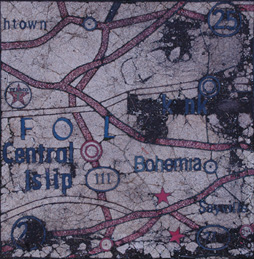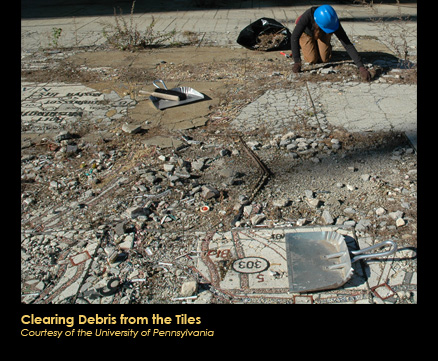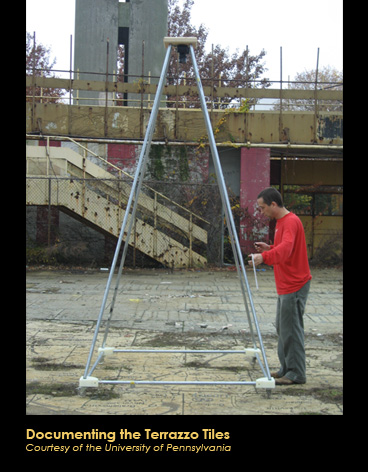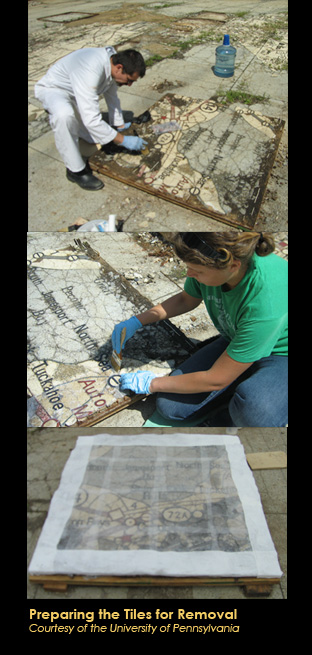
Conservation of the world’s largest road map pavement presents technical challenges unique for its size and material complexity. Years of outdoor exposure have caused extensive cracking, settlement, and loss of elements. A multi-year program of documentation, analysis, and treatment testing is currently underway as funds are sought to preserve the entire map.
The conservation process has begun with the removal of years of vegetation and fragment collection in preparation for a phased treatment program outlined below.

Material & Condition Recording
Detailed digital photographs of every terrazzo tile were taken creating a giant digital photomontage assembled tile by tile much like the original map. Upon this base image all materials, conditions, and executed treatments will eventually be recorded using GIS for each tile.

Analysis
Physical and chemical analyses were used to study the fabrication and assembly of the pavement. The map is a true hybrid combining ancient mosaic traditions (opus signinum) with modern production methods (photo-projection) and materials (Portland cement, various plastics and crushed glass).
Treatment
Representative tiles from Long Island have been removed for on-going conservation treatment and exhibit at the Queens Museum of Art. Prior to their arrival at the museum, each tile was temporarily faced with gauze, adhesive and Plaster of Paris for protection, lifted and crated for transport. Once at the museum, the tiles were then reversed and their cement underbed and corroded iron reinforcement bars were removed and replaced with a strong lightweight plastic honeycomb support set in mortar. The tiles were then turned, the face cleaned, and work began on stabilizing the cracked terrazzo using epoxy and mortar injections. Finally all losses were filled with colored terrazzo and insets replaced with laser cut replicas.

Both time and funds will be needed to conserve the entire map. In the meantime the pavement will be temporarily buried for protection against the weather and vandals using techniques developed for ancient mosaic pavements at archaeological sites. The Long Island tiles will be conserved and exhibited on display to generate greater public awareness about the Great Map and the vanishing landscape of the 1964-65 New York World’s Fair.